Family Member Proof of Residency Letter Template
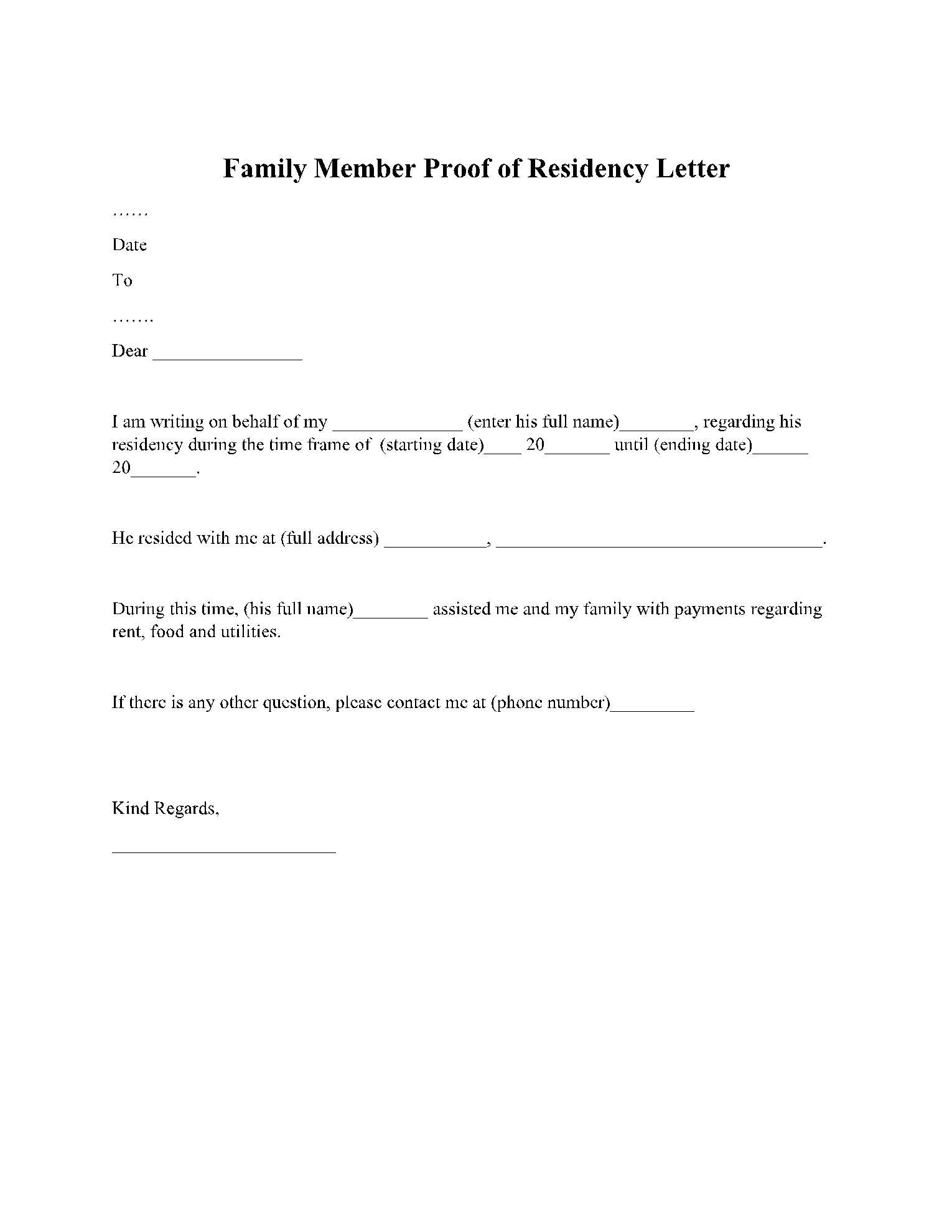
In certain situations, you may need to confirm the living arrangements of someone within your household for various official purposes. This type of confirmation can be required when dealing with governmental agencies, educational institutions, or financial entities that need assurance of someone’s address. A well-written document is often the key to ensuring that all necessary information is provided clearly and effectively.
Creating this type of confirmation requires understanding what details are essential to include. It’s important to customize the content to fit the specific requirements of the institution requesting it. Moreover, ensuring that the document is signed, dated, and, if necessary, notarized can add credibility and authenticity to the statement.
Understanding how to structure the document correctly and avoiding common errors can help streamline the process. Including additional supporting materials, such as utility bills or identification documents, can also reinforce the validity of the claim and provide all the necessary evidence to support the written statement.
Document for Verifying Household Address
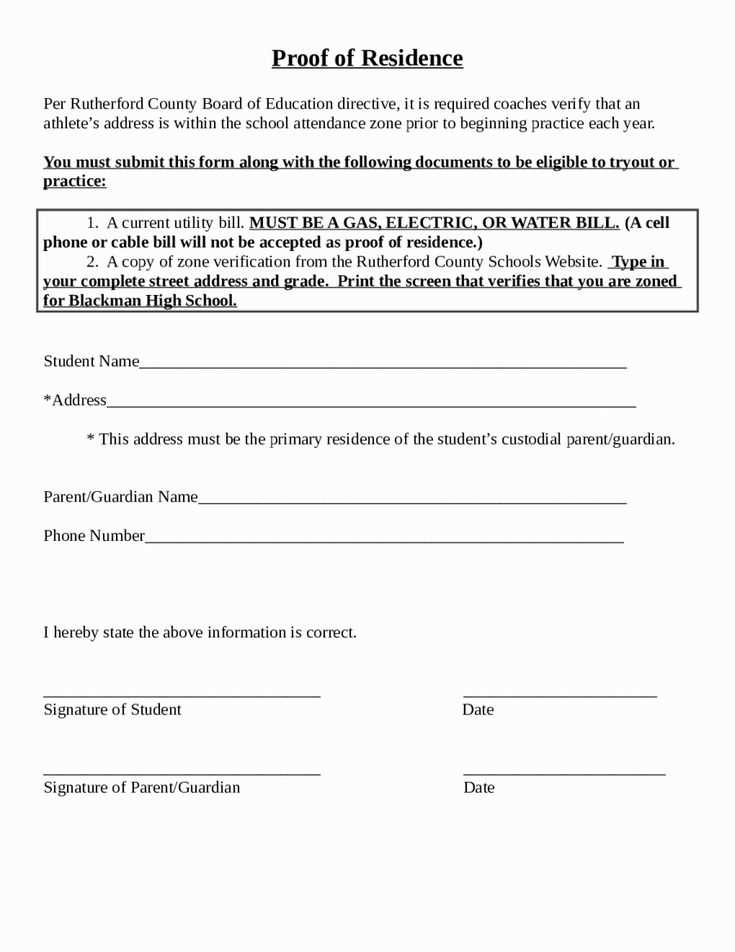
When you need to confirm someone’s living situation within a home for official or legal purposes, a properly structured statement can help fulfill the requirement. This written declaration serves as confirmation of a person’s place of residence, providing necessary details to verify their living conditions.
In order to create an effective statement, it’s important to include specific information to ensure its validity. A well-crafted document should cover key details such as:
- Full name of the individual being verified
- Complete home address
- Relationship between the person and the signatory
- Date of residence verification
- Signature of the person confirming the details
Additionally, it’s essential to make the document personal and tailored to the situation at hand. Customizing it based on specific requests from institutions will help meet their exact needs. In some cases, including extra supporting evidence, such as utility bills or identification cards, may further strengthen the credibility of the statement.
Ensuring the document is accurate and complete reduces the likelihood of any delays or issues when it is submitted. If necessary, having the declaration notarized can enhance its legitimacy and ensure that all requirements are fully met.
Why You Need a Residency Verification
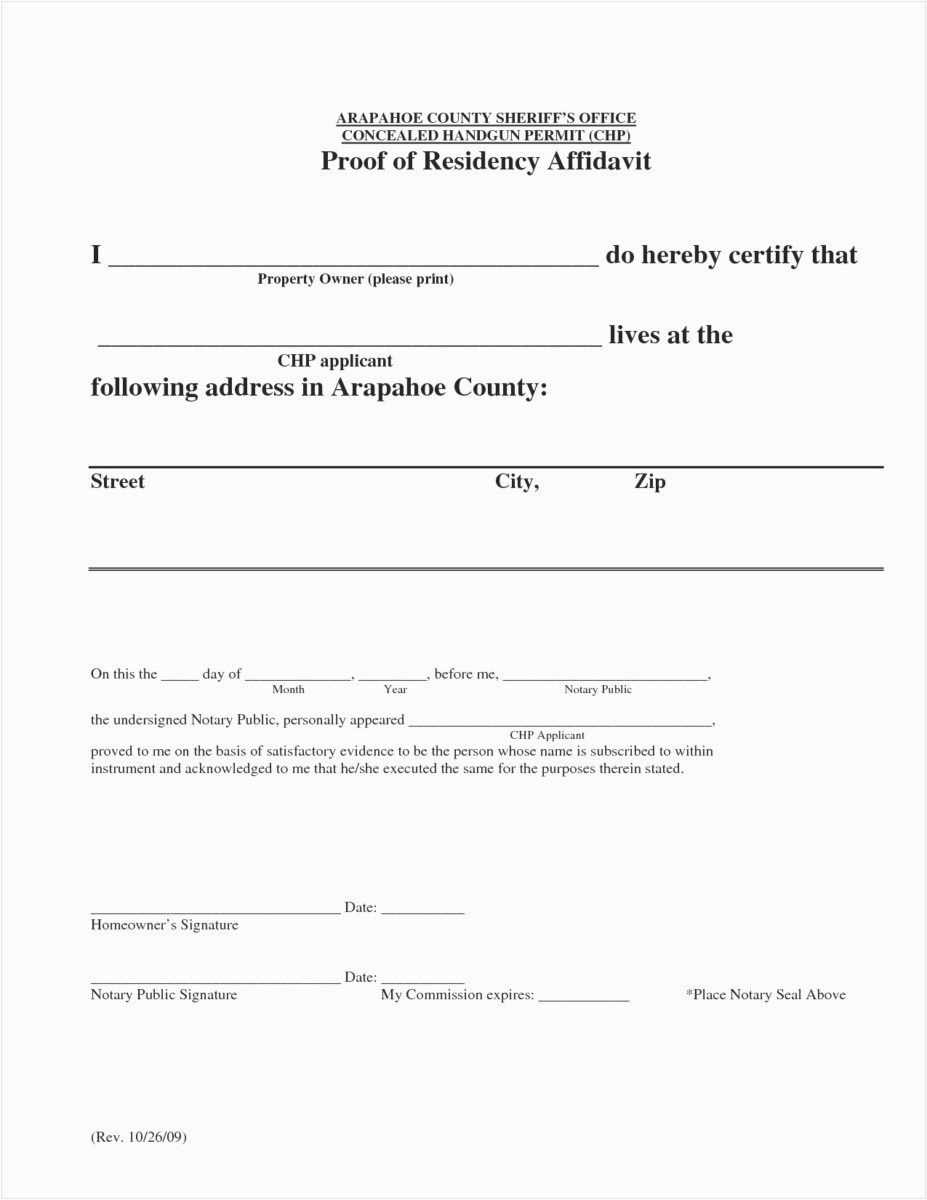
There are situations when confirming someone’s living arrangements is essential for legal, financial, or personal reasons. This confirmation helps provide clarity on where a person is located, which may be necessary for a variety of formal processes such as enrolling in school, applying for government services, or securing housing. Without such verification, it can be difficult for institutions to process applications or requests accurately.
Importance for Official Procedures
Many organizations, such as banks, schools, and government agencies, require verification of someone’s address to ensure the information matches their records. This is often done to avoid fraud or errors in records. Providing an official statement confirming someone’s living conditions ensures that the application or request is handled correctly and promptly.
Essential for Legal and Financial Matters
In legal cases, such as custody hearings or property disputes, having a clear record of where a person resides can be critical. Financial institutions may also request verification when applying for loans or opening accounts, as the address is often linked to identity verification processes. Without this confirmation, certain legal and financial actions may be delayed or even denied.
Overall, this verification process provides the necessary documentation to ensure that all parties involved have accurate and up-to-date information, helping to avoid complications down the line.
Essential Information to Include in the Document
When creating a written confirmation of someone’s living situation, it is crucial to ensure all necessary details are included. These key elements help validate the statement and provide a complete picture of the person’s address and their relationship to the signatory. Below is a table outlining the most important information to consider:
| Information | Description |
|---|---|
| Full Name | The full legal name of the individual whose living situation is being confirmed. |
| Address | The complete address where the person resides, including street, city, and postal code. |
| Relationship | A brief explanation of the relationship between the person verifying the information and the individual. |
| Duration of Stay | The period for which the person has lived at the given address. |
| Signature | The signature of the person providing the confirmation to validate the information. |
Including these details ensures the document is comprehensive and reliable. It is also important to adapt the content to meet the specific needs of the institution or agency requesting it, as some may have additional requirements for the statement.
Personalizing the Document for Specific Needs
When creating a written statement to confirm someone’s living situation, it’s essential to tailor the content to meet the exact requirements of the requesting institution or organization. A generic document may not fulfill all the necessary criteria, so making adjustments based on the specific purpose can help ensure it is accepted and processed smoothly.
Adjusting Content for Different Purposes
For example, if the document is intended for educational purposes, it might be necessary to include additional details such as the individual’s school enrollment status. In contrast, if it’s for legal matters, providing more thorough background on the living arrangement and relationship may be required. Customizing the content to fit these particular needs makes the document more relevant and credible.
Adapting to Institutional Guidelines
Different institutions may have varying standards for what should be included or omitted. It’s important to check if there are specific formatting requirements, such as the inclusion of certain documents or the need for notarization. Being aware of these specifications and incorporating them into the written confirmation can help avoid delays or rejections.
Common Errors to Watch Out For
When drafting a formal document to confirm someone’s living situation, it’s easy to overlook certain details or make mistakes that could lead to complications or delays. Being aware of common errors can help ensure the document is accurate, clear, and accepted by the relevant authorities or organizations.
Incorrect or Missing Information
One of the most frequent mistakes is omitting important details or including incorrect information. To avoid this, double-check that all necessary data is accurate and included:
- Full name of the individual
- Correct address with all relevant details (street, city, zip code)
- Clear explanation of the relationship
- Signature and date
Failure to Meet Formatting Requirements
Many institutions have specific guidelines for how the document should be structured. Ignoring these requirements could result in rejection or delays. Some key formatting issues to watch for include:
- Not using the correct format for dates
- Failure to provide a clear and readable structure
- Omitting official signatures or supporting documents
By addressing these common errors, you can create a more reliable and accepted document that fulfills its intended purpose efficiently.
How to Ensure Proper Notarization
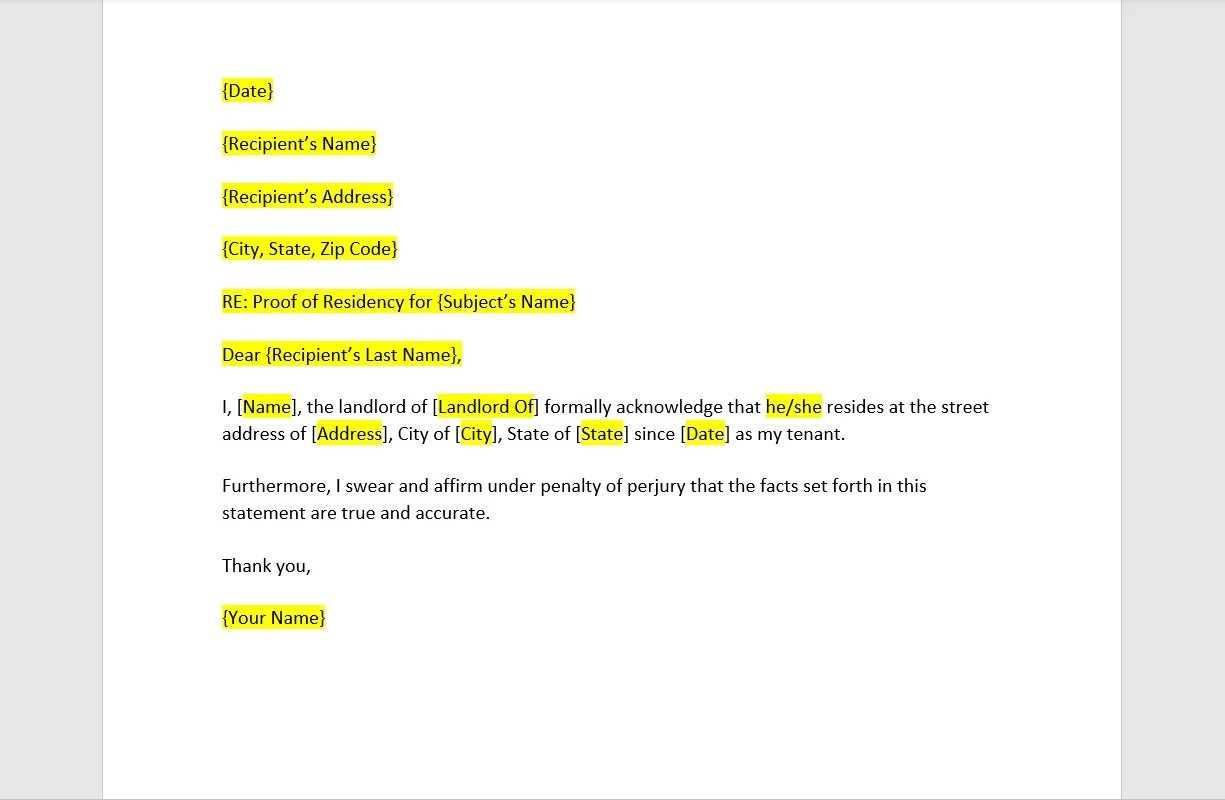
When preparing an official statement to confirm someone’s living situation, it’s often required to have the document notarized to verify its authenticity. Notarization adds a layer of trust and legality, making sure that the information provided is accurate and properly witnessed. The following guidelines will help ensure the notarization process goes smoothly and meets all necessary legal standards.
Steps to Proper Notarization
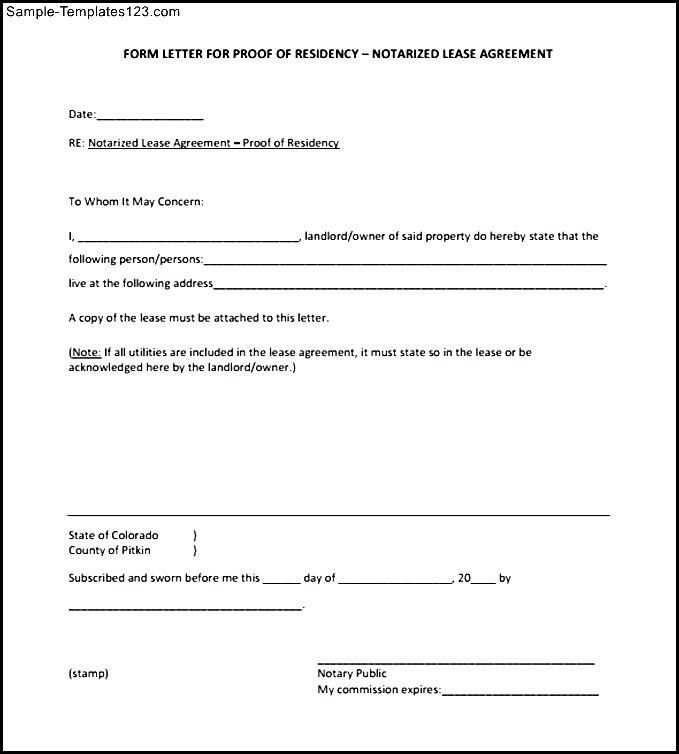
To avoid delays or issues, follow these key steps when getting the document notarized:
- Ensure the document is completely filled out before presenting it to the notary.
- Bring valid identification, such as a driver’s license or passport, for verification purposes.
- Do not sign the document before meeting with the notary; they must witness the signing process.
Choosing the Right Notary
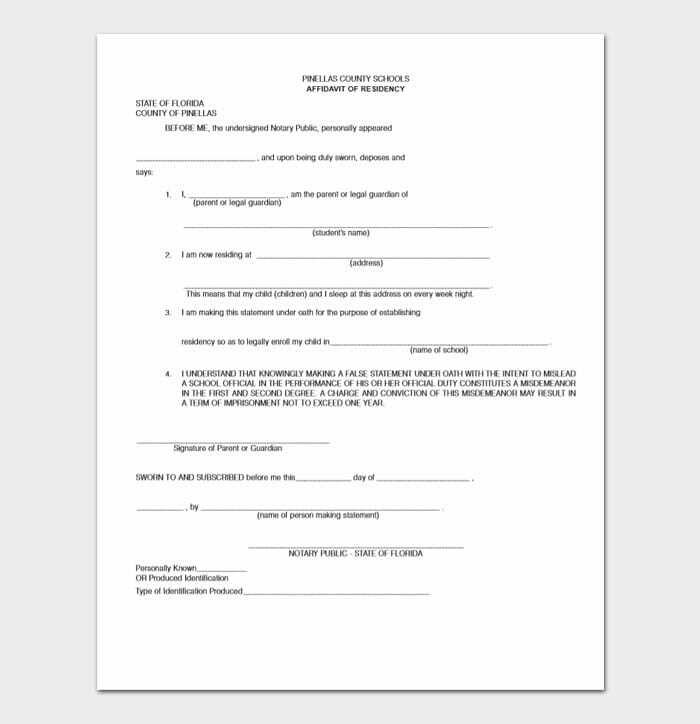
It is crucial to choose a qualified and authorized notary public to ensure the process is legitimate. Verify that the notary is licensed and follows the laws and requirements in your jurisdiction. Additionally, it’s important to ensure they are available to notarize the document in person, as remote notarization may not be acceptable in all cases.
By following these steps and ensuring proper notarization, you can avoid potential issues and ensure the document holds up to legal scrutiny.
Supporting Documents to Attach for Validation
When submitting a formal declaration of someone’s living arrangements, it’s essential to provide additional supporting materials that can substantiate the claims made in the statement. These supplementary documents serve as evidence to verify the accuracy and legitimacy of the information provided, making the process smoother and more reliable.
Common documents to include are utility bills, bank statements, or government-issued correspondence that reflect the individual’s current address. These documents help to confirm that the person resides at the specified location and can also offer a legal or administrative verification when necessary.
By attaching the appropriate documentation, you ensure that your declaration is more credible and accepted by the relevant authorities or institutions that may require it for processing.